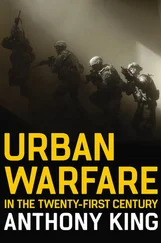After a brief pause, the XXXXVIII Panzerkorps resumed its counter-attack on 6 December. By this point, the ground had hardened and the first snow arrived, which improved German tactical mobility. This time, the 1. and 7.Panzer-Divisionen and LSSAH tried to outflank the Soviet 60th Army at Radomyschl from the west, while Das Reich , 8. and 19.Panzer-Divisionen tried to envelop it from the southeast. However, the LSSAH ’s panzers ran out of fuel on the second day of the attack, and trying to surround infantry in forested areas with tanks proved rather difficult. Eventually, the German armoured pincers closed and von Manstein claimed three Soviet rifle divisions had been ‘wiped out’ in the four-day Battle of Radomyschl, but based upon the paltry haul of prisoners this was a bald lie. {202} Next, von Manstein decided to clear the area east of Korosten, where 38th Army had dug in around the town of Meleni. When Vatutin recognized that von Manstein was committing strong armoured reserves to a counter-offensive, he shifted his forces onto the tactical defensive, moving anti-tank and infantry units forward and pulling Rybalko’s armour back. The Red Army was learning how to be flexible in order to absorb German counter-attacks, rather than rigidly carrying on with a preconceived operational plan, as Timoshenko had done at Kharkov in May 1942. On 18 December, the LSSAH and 1.Panzer-Division attacked Soviet positions near Meleni but quickly ran into a wall of anti-tank guns and mines. For six days the XXXXVIII Panzerkorps kept attacking, but it could not create a Kessel and von Manstein was forced to suspend the counter-offensive on 20 December. Das Reich was so burnt out by the end of this operation that the bulk of the division was sent to rebuild in France, but a brigade-size Kampfgruppe with two Panzergrenadier-Bataillonen, two Panzer-Kompanien (15 tanks), the reconnaissance battalion, two self-propelled artillery batteries and a Pionier-Kompanie remained on the Eastern Front until April 1944.
Von Manstein claimed a significant tactical victory in the tank battles around Fastov, Brusilov, Radomyschyl and Meleni. He declared that Vatutin had lost 700 tanks in these battles and that Rybalko’s 3 GTA and the 38th and 60th Armies had been badly defeated. Again these were ridiculous exaggerations, intended to assuage Hitler’s anger about the loss of Kiev. In order to buttress his claims, two KV-85 tanks captured during the December counter-attacks were sent back to Germany as trophies, although these provided an ominous indication that the Red Army would field new tanks in 1944. In fact, Vatutin’s armour losses during this period were moderate because he did not allow Rybalko’s 3 GTA to become decisively engaged, instead parrying XXXXVIII Panzerkorps’ blows with his anti-tank units. Vatutin wanted to conserve 3 GTA for the exploitation role and instead relied upon the independent tank regiments attached to his infantry armies to support the defence. Von Manstein also ignored the fact that Soviet battlefield recovery techniques were improving, which meant that many tanks that were knocked out were salvaged and repaired. German recovery of damaged tanks was increasingly difficult due to the excessive amount of resources required to salvage 45-ton Panthers and 54-ton Tigers. During the counter-offensive, von Manstein failed to land any really solid blows upon Vatutin’s armour, which meant that the results were indecisive. Even worse, by 20 December, only 46 per cent of PzAOK 4’s armour was still operational (including 28 Panthers and 11 Tigers). {203}
While XXXXVIII Panzerkorps was futilely pounding away at Vatutin’s infantry and anti-tank guns, Rybalko’s 3 GTA was receiving an infusion of fresh tanks and crews to restore its fighting strength. In addition, Katutov’s 1 TA (4 GTC, 11 GTC, 8 GMC) had been rebuilt to a strength of 42,000 troops and 546 tanks/self-propelled guns. Amazingly, the Red Army was able to restore the bridges and rail lines in Kiev in just three weeks and Katukov’s 1 TA was brought across the Dnepr by rail, thereby sparing the tanks the wear and tear of a long road march. By 20 December, Katukov’s 1 TA had been assembled behind Moskalenko’s 38th Army near Fastov. {204} Vatutin intended to make his main effort against the German XXXXII Armeekorps near Brusilov, which was holding a 40km stretch of front with the 8., 19. and 25.Panzer-Divisionen; it was a mark of desperation that the Germans were holding a large chunk of front line with armoured units due to the limited amount of infantry available. Furthermore, PzAOK 4 was badly deployed, with the strongest formations, LSSAH and 1. Panzer-Division on the extreme left, near Korosten.
The morning of 24 December was overcast and it was raining. At 0600 hours, Moskalenko’s 38th Army began a 60-minute artillery preparation against the XXXXII Armeekorps, then attacked with ten rifle divisions supported by 200 tanks. The main Soviet effort struck the boundary between the 19. and 25.Panzer-Divisionen and quickly gained ground. Generalmajor Hans Källner’s 19.Panzer-Division had 16 operational tanks and eight self-propelled Panzerjagers, but only a few hundred Panzergrenadiers, so it was forced to fight a delaying action. The 25.Panzer-Division was considerably stronger, with 51 tanks and seven StuG IIIs, but its left flank was soon exposed and Källner fell back. {205} The same thing happened to the 8.Panzer-Division, as its right flank was exposed. By nightfall, the centre of XXXXII Armeekorps was collapsing under the hammer-blows of infantry and tanks and its three Panzer-Divisionen had to keep fighting their way out of encirclements. Once it was clear that Moskalenko had achieved a tactical breakthrough, Vatutin committed both Katukov’s 1 TA and Rybalko’s 3 GTA to exploit – the first time that two tank armies had attacked simultaneously side-by-side. Caught by surprise, Raus tried to adjust his forces, but the Soviet armour moved much too quickly. By the third day of the Soviet offensive the XXXXII Armeekorps was falling apart and Raus had nothing to plug the gap. Raus focused on massing 1.Panzer-Division and LSSAH around Zhitomir, but Vatutin reoriented his tanks southward instead of westward, flowing around German strongpoints. By 30 December, the XXXXVIII Panzerkorps was nearly encircled in Zhitomir and PzAOK 4 had broken into three pieces, with large gaps in between. Raus abandoned both Korosten and Zhitomir and tried to mass his remaining forces around Berdichev. As the year ended, Vatutin had PzaOK 4 on the run and the German front was in complete chaos.
German accounts of this period of the war tend to emphasize tactical victories, where small numbers of German tanks knocked out much larger number of Soviet tanks. While there is some truth in these accounts, they are generally silent about German losses. These types of accounts also tend to miss the main point, that German armour was fighting delaying actions, not successful defensive operations, while the much-maligned T-34s were generally accomplishing their operational objectives. The fact is that by late 1943 the Panzer-Divisionen could no longer stop the Soviet ‘steamroller’, only delay it and increase the price of victories. Each retreat cost the Germans logistic resources that further degraded their ability to maintain combat-effective Panzer-Divisionen in the field and the breaking point was fast approaching. It is also important to note that the Panzer-Divisionen lost their freedom of manoeuvre in late 1943, due to being increasingly tied to the defence of critical sectors. Von Manstein no longer had a masse de manoeuvre .
There is no doubt that victory did not come cheaply for Vatutin’s and Konev’s fronts, which had suffered personnel casualties that exceeded 1 million (including 290,000 dead or missing) during July–December 1943, but they received a similar number of replacements. In the same period, the Red Army as a whole lost about 12,000 tanks, but 10,162 new tanks were built and about 7,000 damaged tanks repaired, which enabled the Soviets to maintain a 3–1 or better armoured numerical superiority over the Germans. {206} In contrast, the Germans lost a total of about 2,800 tanks and 850 assault guns in the East during July–December 1943, against 1,954 tanks and 1,328 assault guns received as replacements or reinforcements. {207} Indeed, only 60 per cent of German AFV production in this period went to the Eastern Front, the rest going to build up armoured units for the defence of Western Europe. Due to the loss of repair facilities in Dnepropetrovsk and Kiev, German support capabilities were severely disrupted: only half of the 2,053 German tanks on the Eastern Front on 31 December 1943 were operational. {208} The personnel situation was even worse for von Manstein, with Heeresgruppe Süd having suffered over 372,000 casualties (including 102,000 dead or missing) in the last half of 1943, but receiving fewer than 200,000 replacements.
Читать дальше
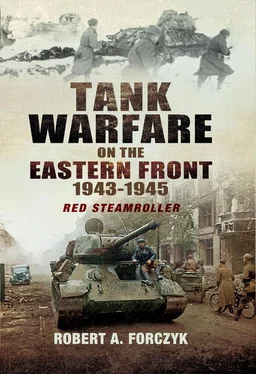



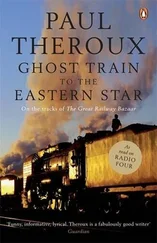
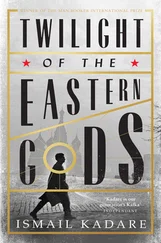
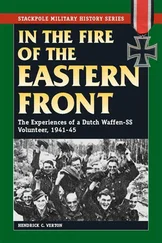

![John Stieber - Against the Odds - Survival on the Russian Front 1944-1945 [2nd Edition]](/books/405234/john-stieber-against-the-odds-survival-on-the-russian-front-1944-1945-2nd-edition-thumb.webp)


